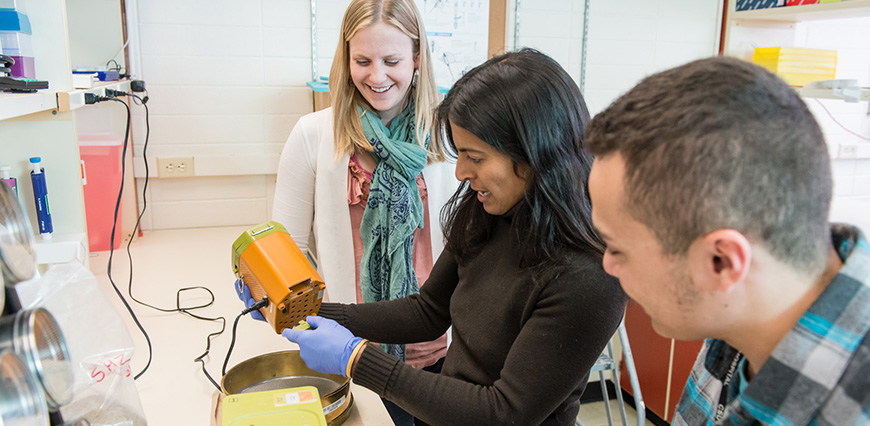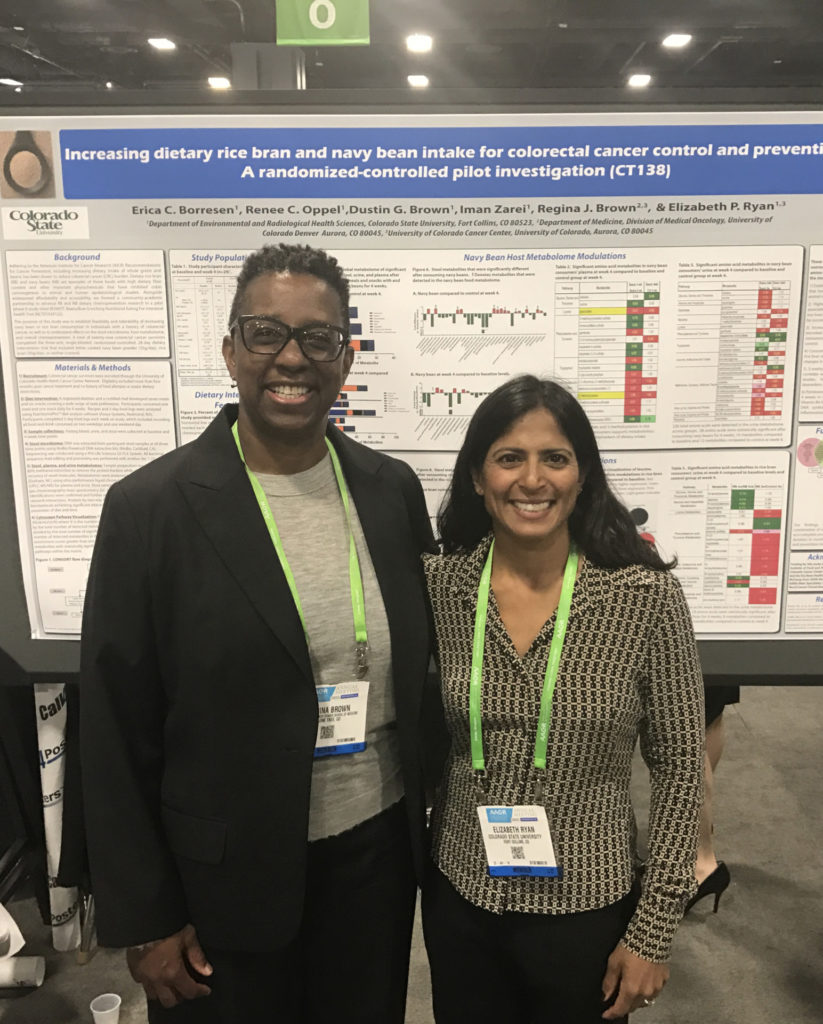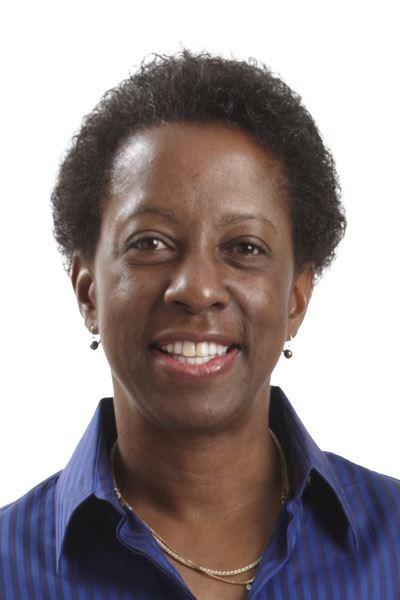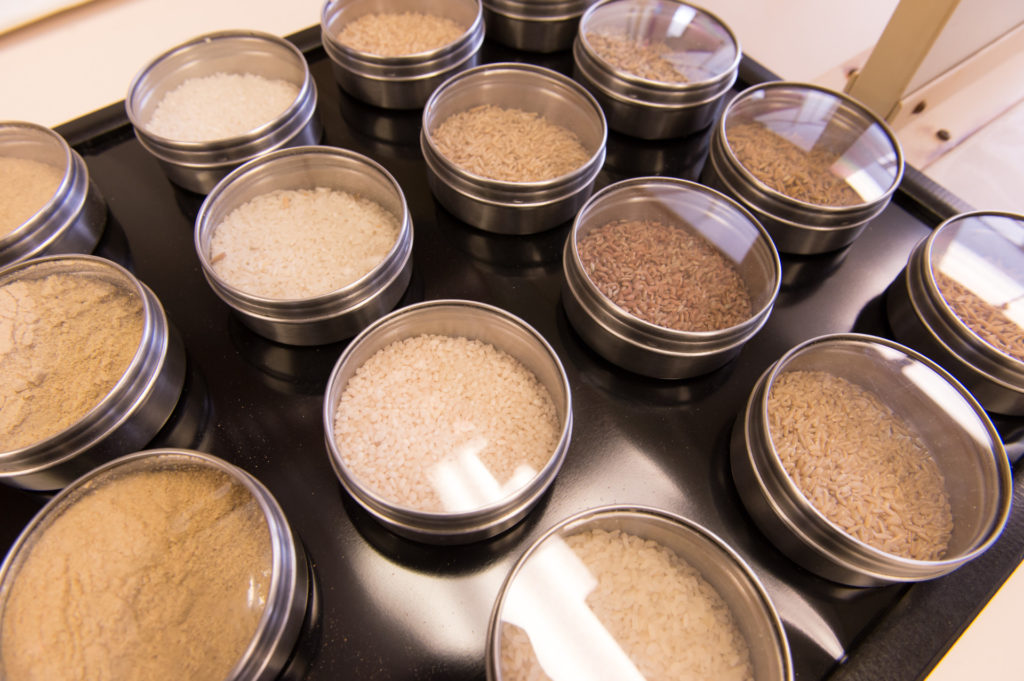Rice Bran and Beans – they’re what’s for dinner
by Kristen Browning-Blas | April 4, 2017 1:08 PM
Endnotes:
- [Image]: http://source.colostate.edu/wp-content/uploads/2017/04/IMG_6976.jpg
- Ryan Lab: http://csu-cvmbs.colostate.edu/academics/erhs/Pages/elizabeth-ryan-lab.aspx
- College of Veterinary Medicine and Biomedical Sciences: http://csu-cvmbs.colostate.edu/Pages/default.aspx
- University of Colorado Cancer Center: http://www.ucdenver.edu/academics/colleges/medicalschool/centers/cancercenter/Pages/CancerCenter.aspx
- oncologist with UCHealth: https://www.uchealth.org/provider/regina-brown--md-medical-oncology
- latest findings: http://www.abstractsonline.com/pp8/#!/4292/presentation/12455
- American Association of Cancer Research: http://www.aacr.org/MEETINGS/PAGES/MEETINGDETAIL.ASPX?EVENTITEMID=105
- American Institute for Cancer Research: http://www.aicr.org/reduce-your-cancer-risk/recommendations-for-cancer-prevention/
- study with cancer survivors: http://www.tandfonline.com/doi/full/10.1080/01635581.2016.1224370
- Erica Borresen: http://csu-cvmbs.colostate.edu/academics/erhs/Pages/elizabeth-ryan-lab-people.aspx
- Colorado School of Public Health: http://www.ucdenver.edu/academics/colleges/PublicHealth/About/locations/Pages/CSU.aspx
- [Image]: http://source.colostate.edu/wp-content/uploads/2017/04/Regina_Brown.jpg
- Department of Environmental and Radiological Health Sciences: http://csu-cvmbs.colostate.edu/academics/erhs/Pages/default.aspx
- Colorado School of Public Health: http://publichealth.colostate.edu/people/
- Ryan’s work: http://source.colosate.edu/toxicologist-probes-role-dry-beans-rice-bran-preventing-heart-disease-cancer/
- Beans/Bran Enriching Nutritional Eating For Intestinal Health Trials: http://csu-cvmbs.colostate.edu/academics/erhs/Pages/elizabeth-ryan-lab-human-studies.aspx
- Cancer Prevention Lab: http://www.cpl.colostate.edu/
- [Image]: http://source.colostate.edu/wp-content/uploads/2017/04/Rice.jpg
- Brown: https://www.youtube.com/watch?v=QWtqOmB_GK0
- assistant professor at the University of Colorado School of Medicine: http://www.cudoctors.com/Find_A_Doctor/Profile/23673
- laboratory research: https://www.animalsciencepublications.org/publications/jas/articles/90/8/2631
- canine companions: http://csu-cvmbs.colostate.edu/Documents/jaan-article-eryanlab.pdf
- Sahti: http://sahtihealth.com
- other northern Colorado locations: http://sahtihealth.com/store-locator/
Source URL: https://source.colostate.edu/rice-bran-beans-theyre-whats-dinner/
Copyright ©2024 SOURCE unless otherwise noted.

 [1]
[1] [12]
[12] [18]
[18]